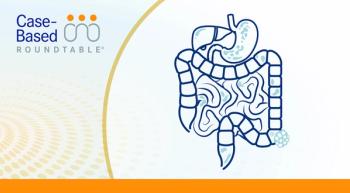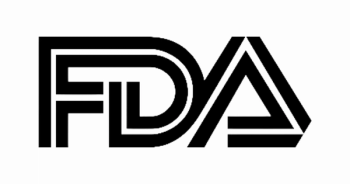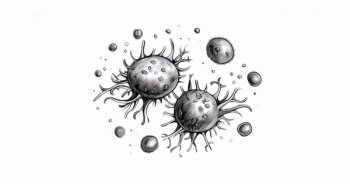
Orca-T Shows Survival Benefit Over Cyclophosphamide in Transplant Study
Orca-T improved overall survival vs post-transplant cyclophosphamide in a retrospective analysis.
A retrospective analysis showed improved overall survival (OS) with Orca-T compared with post-transplant cyclophosphamide in patients who received the investigational allogeneic T-cell immunotherapy in a phase 1b trial (NCT04013685) versus a registry-based cohort. Findings, first presented at the 2024 ASH Annual Meeting, were featured in an encore presentation at the 2025 Transplantation & Cellular Therapy Meetings.1
Findings presented at both meetings showed that the 1-, 2-, and 3-year OS rates were 96% (95% CI, 88%-99%), 88% (95% CI, 78%-94%), and 86% (95% CI, 73%-92%), respectively, in the cohort of Orca-T–treated patients from the phase 1b study selected for retrospective comparison (n = 77) with the CIBMTR registry. Patients from the CIBMTR registry who received post-transplant cyclophosphamide after allogeneic stem cell transplant (allo-HCT; n = 293) achieved 1-, 2-, and 3-year OS rates of 82% (95% CI, 78%-87%), 73% (95% CI, 68%-79%), and 67% (95% CI, 61%-74%), respectively.
Additionally, among the entire cohort of patients who received Orca-T during the phase 1b study (n = 154), and with a median follow-up of 30 months (range, 0-54), the 1-, 2-, and 3-year OS rates were 88% (95% CI, 83%-94%), 80% (95% CI, 74%-87%), and 76% (95% CI, 69%-84%), respectively.
“Orca-T exhibited low [rates of] graft-vs-host disease [GVHD], low [rates of] infections, and high survival in the context of a single-arm, phase 1b trial. Decreased non-relapse mortality [NRM] and increased relapse-free survival [RFS] may be contributing to increased OS in the phase 1b cohort,” lead study author Everett Meyer, MD, PhD, associate professor of medicine, pediatrics, and surgery at Stanford Medicine in California, and coauthors wrote in the poster presented at the meeting.
Complications from GVHD limit the utility of allo-HCT, and although post-transplant cyclophosphamide is often used to counter GVHD, its advantages may be offset by a higher risk of infection and organ damage. Orca-T is an investigational immunotherapy that uses high precision donor regulatory T cells with single-agent tacrolimus as GVHD prophylaxis.
The safety and efficacy of the product was tested in a phase 1b study, which enrolled patients between 18 and 75 years of age with high-risk hematologic malignancies including acute myeloid leukemia, acute lymphoblastic leukemia, high- or very high–risk myelodysplastic syndrome, and myelofibrosis. Patients needed to be eligible for myeloablative conditioning, have an HCT-specific comorbidity index of 4 or less, a Karnofsky performance status of 70 or greater, and adequate organ function.
In accordance with the phase 1b study protocol, patients received myeloablative conditioning on days –10 to –2 before receiving an infusion of hematopoietic stem and progenitor cells, as well as regulatory T cells (Tregs) at a dose of 3 x 106 Treg/kg. On day 2, patients received an infusion of conventional T cells at a dose of 3 x 106 T cells/kg, and on day 3, single-agent tacrolimus was administered at a target dose of 1 to 10 ng/mL.
The incidence of dose-limiting toxicities and the rate of primary graft failure through day 28 served as the trial’s primary end points.
With respect to baseline characteristics, the median age was 49 years (range, 39-58) in the Orca-T arm vs 48 years (range, 37-58) in the post-transplant cyclophosphamide arm. The majority of patients were male (Orca-T, 57%; post-transplant cyclophosphamide, 57%), had myeloid malignancies (70%; 72%), had intermediate-risk disease (65%; 64%), were in first complete remission (60%; 63%), had matched unrelated donors (52%; 85%), were White (68%; 84%), and were not Hispanic or Latino (75%; 82%).
Median follow-up was 33 months (range, 5-54) and 24 months (range, 0-53) in the phase 1b and post-transplant cyclophosphamide comparative cohorts.
Additional findings illustrated that the 1-year NRM rates were 2% for the selected Orca-T arm (n = 77) vs 8% for the post-transplant cyclophosphamide arm (n = 290). The respective 1-year RFS rates were 83% and 71%.
Honing in on the phase 1b cohort (n = 150), Meyer noted that the rate of primary graft failure was 2% in safety-evaluable patients treated with Orca-T and that no instances of secondary graft failure occurred. Moderate-to-severe chronic GVHD occurred in 13% of patients, and 5% of patients had grade 3 or higher acute GVHD.
Grade 1 to 3 infections occurred in 28% of patients, 5% had a grade 4 infection, and 1% had a grade 5 infection. The NRM rate was 9%.
The phase 3 Precision-T trial (NCT05316701), which has completed enrollment, will further evaluate Orca-T vs standard allo-HCT in patients with advanced hematologic malignancies.3
Disclosures: Meyer received research funding from Orca Biosystems, Inc., GigaGen, Indee Labs, and Triursus Therapeutics.








































